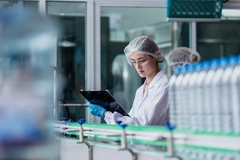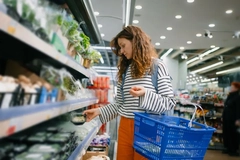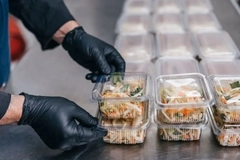What you don’t know does hurt you: Complex chemical cocktails create plastic health dangers, research finds

19 Sep 2019 --- Concern about the potential health implications of microplastics in food and drinks is rising, and for a good reason. A study published by the Norwegian University of Science and Technology (NTNU) estimates that more than 4,000 chemicals are used in modern-day plastic packaging production. However, with over 5,000 different types of plastic puzzled together to create plastic packaging, the number of chemicals used for production will increase further, the research suggests. It is, therefore, becoming increasingly difficult to ensure safety standards.
“The main obstacle is the chemical complexity of plastics. We detected more than 1,400 chemicals across 34 products and were able to identify only about 20 percent of them. This shows that most of the chemicals in plastics are unknown. Accordingly, it is impossible to know whether they are safe or not,” Martin Wagner, the study’s senior author and Biologist at the NTNU tells PackagingInsights.
Wagner’s work is part of the PlastX research group led by the Institute for Social-Ecological Research Frankfurt (ISOE) and was carried out in collaboration with the Goethe University in Frankfurt am Main, Germany. The article was recently published in the journal Environmental Science and Technology.
“We studied eight types of plastics commonly used to make everyday products, such as yogurt cups and bath sponges, and examined their toxicity and chemical composition. Three out of four products contained toxic chemicals,” Lisa Zimmermann, Wagner’s colleague and first author of the study, says. The authors were able to conclude that plastic chemicals in polyvinyl chloride (PVC) and polyurethane (PUR) were the most toxic. Compared to PVC and PUR, polyethylene terephthalate (PET) and high-density polyethylene (HDPE) were less toxic.
 This study has shown that most of the chemicals in plastics are unknown.The dangers of greenwashing
This study has shown that most of the chemicals in plastics are unknown.The dangers of greenwashing
Researchers have long been on the quest to develop both bio-based and biodegradable plastic packaging alternatives. Bioplastics are made from renewable biomass sources, such as plants, and deviate from the standardly used petroleum polymer. Whether or not dangerous chemicals are additionally supplemented to bioplastics remains unclear, explaining why Wagner is unconvinced bioplastics are entirely free of toxic compounds.
“Bioplastics are marketed as ‘greener’ and more sustainable which implies that they are also somewhat safer. I am skeptical about both aspects and our results show that “bioplastics “also contain toxic compounds,” he says.
The study’s researchers knew from the onset that some plastics contain toxic chemicals, such as bisphenol A (BPA) and phthalates, linked to adverse health effects in humans. Nevertheless, Wagner explains the results of his research left him frustrated because they found toxicity in so many different products and plastics materials. “There is there is no way consumers can know which plastics are safe and which are not,” he warns.
Consumers taking matters into their own hands
The PlastX researchers suggest that alternative consumer behavior might have a substantial impact in minimizing the potential health concerns of plastic packaging. Their advice includes:
- Refusing to buy unnecessary plastics and reducing plastics exposure and footprint, for example, by buying fresh and unpackaged products.
- Avoiding PVC products when possible because it is not always clear which material they are made from.
- Demanding safer plastics: Asking retailers for transparency regarding what materials a product is made of and which chemicals are in the product.
Action must be taken – from consumer choices in the supermarket to the international level, says Wagner. Ultimately, he says, it is the responsibility of manufacturers and retailers to improve the chemical safety of their products. He also calls on policymakers to prioritize plastic safety. “We need to avoid demonizing plastics. But given that we live in the plastic age, we need to make sure they don’t affect our health,” he concludes.
Wagner’s research is not novel news. A decision by the European Chemicals Agency (ECHA) to flag BPA as harmful has been upheld by the General Court of the EU, despite refutation from industry lobby group, PlasticsEurope. The move means that BPA must be listed as a substance of “very high concern” on account of its properties that are toxic for human reproduction. BPA is already banned in the EU for some products – such as baby bottles – due to concerns about its effects on the hormonal and reproductive system.
BPA has even been found in thermal paper, commonly used in the retail sector for receipt paper and weighing scale labels. However, new European Union legislation requires all thermal paper sold in Europe to be free of BPA after 2 January 2020.
A study from last year has also found that dietary exposure to BPA can worsen the symptoms of Irritable Bowel Disease (IBD). IBD can be further exacerbated by the hormone estrogen, and BPA is a known synthetic estrogen.
Besides BPA, Per- and polyfluoroalkyl (PFAS) chemicals have also been deemed harmful to human health after being identified in takeout food packaging from several leading US grocery stores. The findings from last year prompted Whole Foods to remove all the packages cited in the report, as five of the 17 materials from the supermarket tested positive for the chemical.
By Anni Schleicher











